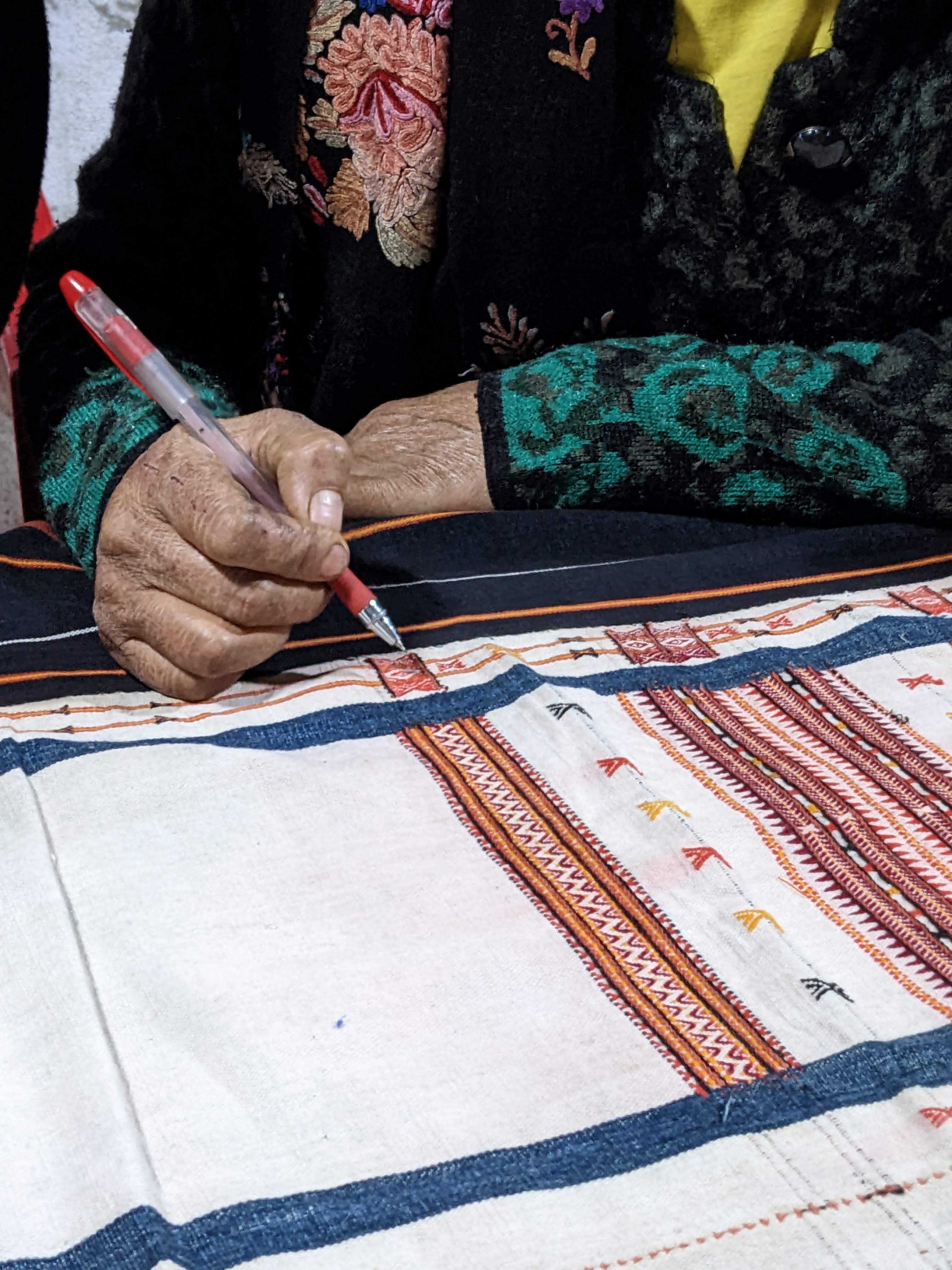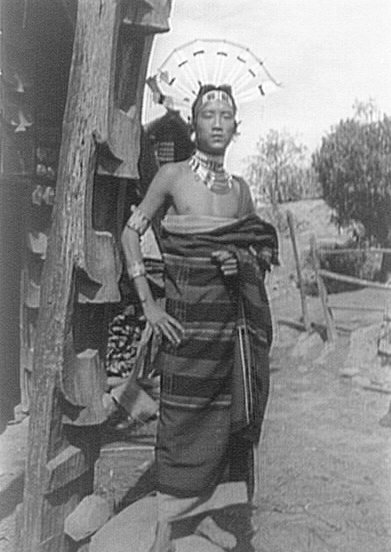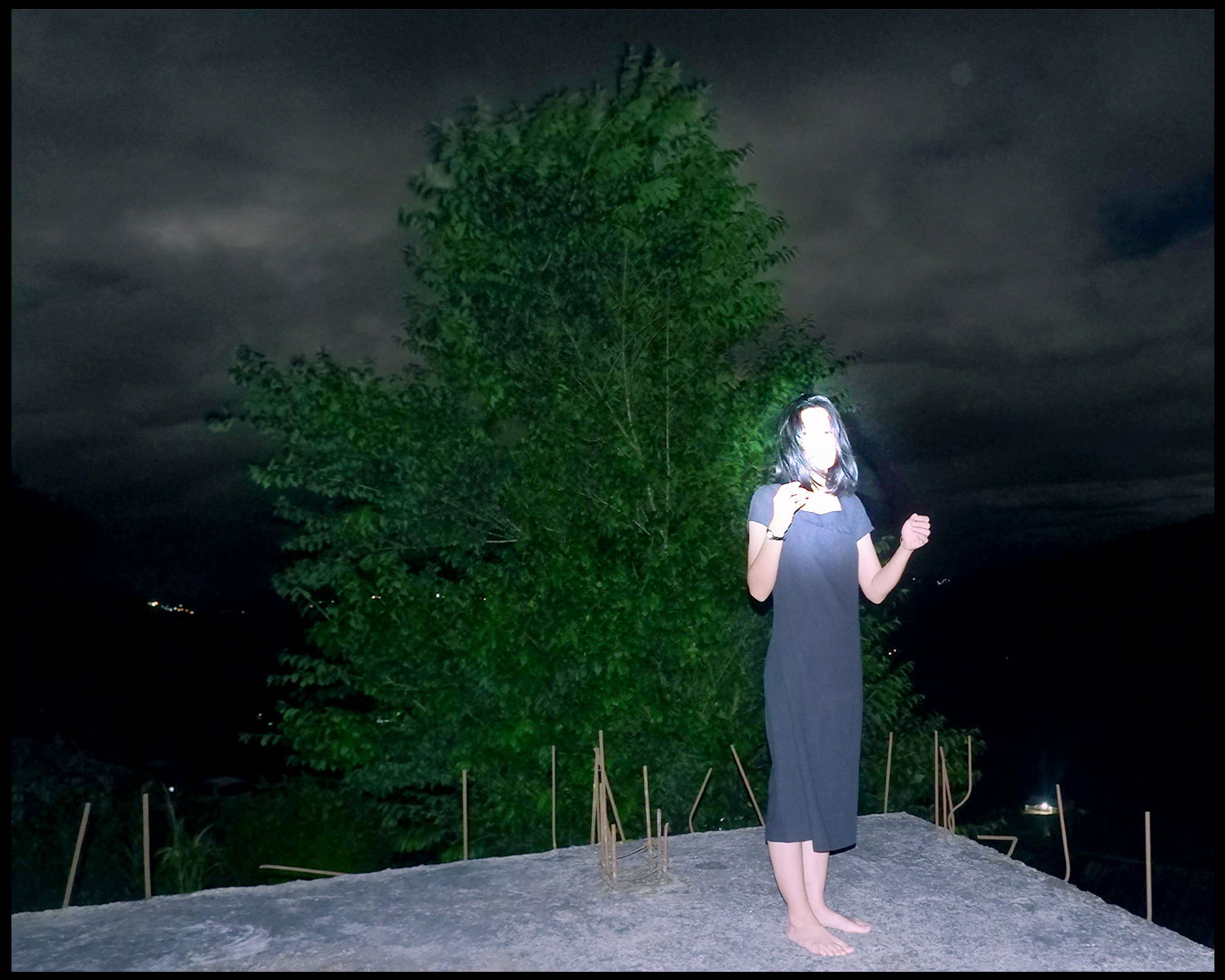Tangkhul Kashan Kachon (2020-Ongoing)
︎ Ukhrul & Kamjong District, Manipur, India.
with Tangkhul Shanaolong | Pearl Shimray | Sokhami Shishak | Achan Mungleng (2020)
Tangkhul Kashan Kachon (2020-Ongoing)
︎ Ukhrul & Kamjong District, Manipur, India.
with Tangkhul Shanaolong | Pearl Shimray | Sokhami Shishak | Achan Mungleng (2020)
︎ Ukhrul & Kamjong District, Manipur, India.
with Tangkhul Shanaolong | Pearl Shimray | Sokhami Shishak | Achan Mungleng (2020)





This is an ongoing community-led research project focused on the documentation of existing and *forgotten traditional textile pieces of the Tangkhul Community.
The project is an urgent response
to preservation and loss of culture heirlooms.
--------------------
Methodology in the context of Indigenous Community:
1. Documentation of Oral Narratives
![]()
Oral storytelling is accompanied by gestures, epigrams and (if you are lucky) songs.Though Weaving is the domain of the women, the origin of a cloth is mostly narrated by men. In the context of Naga Community, the textiles are interwoven with influences of the migration route, relations with neighbouring community, rites of passage, shamanic rituals and historical events of the community.
2. Semiotic Study of the Motifs
![]()
![]()
Motif in Tangkhul is Aphor. The aphor in a cloth becomes an obvious signifier of the wearer’s position in the community- From a honourable man’s kachon*1 to young woman’s wrap kashan*2. When we look into the meanings of these motifs, it is a derivation from nature. One can say the origin of these motifs are the weaver’s geometrized translation of insects, animals or specific traits like footprints of animal etc.
*1.kachon- Cloth
|*2.kashan- Wrap skirt
3. Draw observations of the Post-Colonial Changes
The notion of Morality brought changes in the clothing of the community and newer intervention in the textiles specially in women’s clothing -Kashans were made to be longer than its usual knee length. The discontinuation of indigenous practices witnessed slow abandonment of textiles which were symbolic in rituals.
Methodology in the context of Indigenous Community:
1. Documentation of Oral Narratives
Oral storytelling is accompanied by gestures, epigrams and (if you are lucky) songs.Though Weaving is the domain of the women, the origin of a cloth is mostly narrated by men. In the context of Naga Community, the textiles are interwoven with influences of the migration route, relations with neighbouring community, rites of passage, shamanic rituals and historical events of the community.
2. Semiotic Study of the Motifs


Motif in Tangkhul is Aphor. The aphor in a cloth becomes an obvious signifier of the wearer’s position in the community- From a honourable man’s kachon*1 to young woman’s wrap kashan*2. When we look into the meanings of these motifs, it is a derivation from nature. One can say the origin of these motifs are the weaver’s geometrized translation of insects, animals or specific traits like footprints of animal etc.
*1.kachon- Cloth
|*2.kashan- Wrap skirt
3. Draw observations of the Post-Colonial Changes
The notion of Morality brought changes in the clothing of the community and newer intervention in the textiles specially in women’s clothing -Kashans were made to be longer than its usual knee length. The discontinuation of indigenous practices witnessed slow abandonment of textiles which were symbolic in rituals.
4. Study of the Material Culture
To comprehend the material culture, it is important to possess a geographical awareness of the region. Cotton, Vat in Tangkhul, was harvested and spun into yarns. Natural Dyes like laq, indigo etc and Natural Mordants like sumac to retain the dye on the yarn.
In the context of Indigenous Tribal communities, research methodology places significant emphasis on orality, which encompasses both speaking and listening. The visual vocabulary and literacy are vividly expressed through textiles, possibly due to the gendered nature of this creative domain. The study of textiles holds equal importance to the study of orality, as it provides a profound understanding of the art and culture embedded within these communities.
5. Design Textile Worksheet(in Tangkhul)
![]() While the primary language within the tribe is Tangkhul, it is important to note that the Tangkhul tribe comprises over 200 villages, each with its distinct vernacular languages. This worksheet serves the purpose of identifying textile-related terminologies. It has been thoughtfully designed in both English and Tangkhul languages to cater to different linguistic preferences.
While the primary language within the tribe is Tangkhul, it is important to note that the Tangkhul tribe comprises over 200 villages, each with its distinct vernacular languages. This worksheet serves the purpose of identifying textile-related terminologies. It has been thoughtfully designed in both English and Tangkhul languages to cater to different linguistic preferences.
To comprehend the material culture, it is important to possess a geographical awareness of the region. Cotton, Vat in Tangkhul, was harvested and spun into yarns. Natural Dyes like laq, indigo etc and Natural Mordants like sumac to retain the dye on the yarn.
In the context of Indigenous Tribal communities, research methodology places significant emphasis on orality, which encompasses both speaking and listening. The visual vocabulary and literacy are vividly expressed through textiles, possibly due to the gendered nature of this creative domain. The study of textiles holds equal importance to the study of orality, as it provides a profound understanding of the art and culture embedded within these communities.
5. Design Textile Worksheet(in Tangkhul)
 While the primary language within the tribe is Tangkhul, it is important to note that the Tangkhul tribe comprises over 200 villages, each with its distinct vernacular languages. This worksheet serves the purpose of identifying textile-related terminologies. It has been thoughtfully designed in both English and Tangkhul languages to cater to different linguistic preferences.
While the primary language within the tribe is Tangkhul, it is important to note that the Tangkhul tribe comprises over 200 villages, each with its distinct vernacular languages. This worksheet serves the purpose of identifying textile-related terminologies. It has been thoughtfully designed in both English and Tangkhul languages to cater to different linguistic preferences.............................................................




 [i-]
[i-]